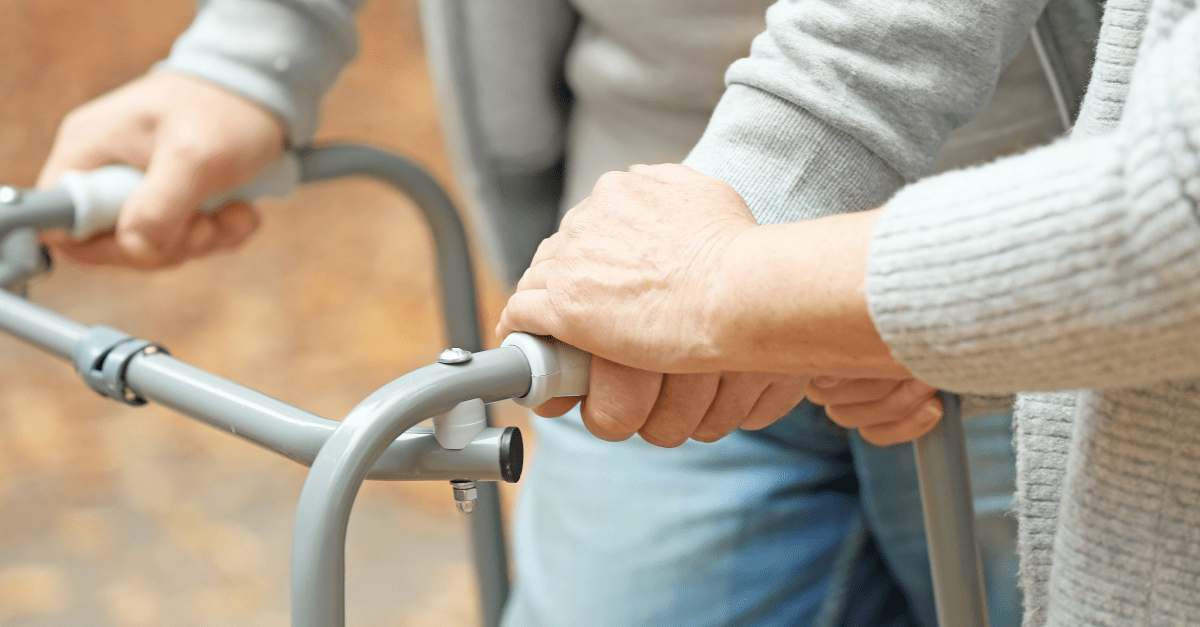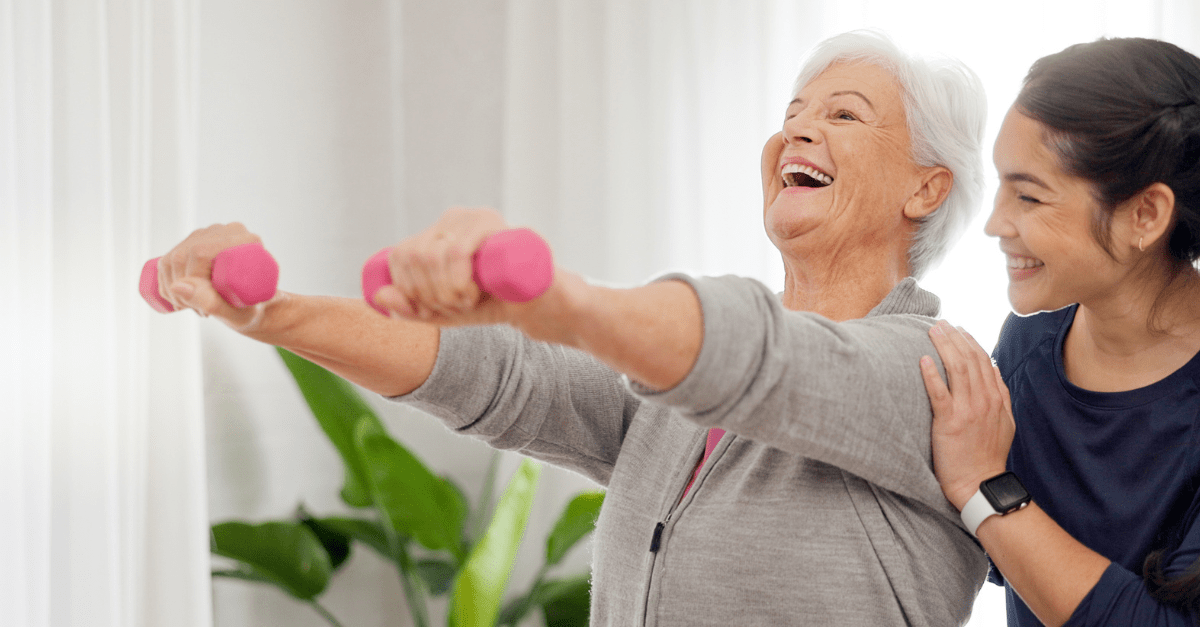Blogs

In Australia’s ageing population, falls prevention for elderly people cannot be overlooked. According to the most current 2023 Australian Government statistics, falls contribute to 43% of injuries leading to hospitalisation, making falls the top cause of injury related hospitalisations in Australia, with people aged 65 years and over being the most affected. As the impact of a fall can lead to loss of independence, confidence and impact overall well-being, understanding the role that Physiotherapists and Occupational Therapists play in supporting people implement fall prevention strategies to prevent future fall incidents, and engaging in their expertise, can help improve the quality of life for you or your elderly loved one.

For many people, maintaining our mobility is not just about getting from point A to point B – it is about the ability to perform daily activities with independence and confidence. However, as we age or face health challenges, maintaining mobility can become challenging. This is where mobility aids come in handy. Among the various types of mobility aids is the rollator – more commonly known among aged care residents and older people as a mobility walker. Used by seniors or those with a disability, the mobility walker / rollator certainly stands out as a useful and effective piece of equipment and are highly recommended by our Vivir Healthcare physiotherapists. How Mobility Walkers/ Rollators Enhance Mobility and Independence One of the primary reasons why physiotherapists recommend the use of a mobility walker to their clients after a mobility aid assessment is to enhance their mobility and independence. Designed to provide greater stability and support, the mobility walker makes it easier for individuals to move around safely within their home and in the community. Not to be mistaken to a walking frame, a mobility walker will include wheels (3, or 4 depending on the design), brakes and a cushioned seat. They are also designed to be pushed and allow the user to still move at their regular pace. In addition, unlike traditional walking sticks, which offer minimal support, the mobility walker provides a broader base of support as well as even weight distribution. Physiotherapists will recommend a mobility walker / rollator when the user is seeking some more stability when walking. They are the best and most practical option over a walking frame when the user’s balance is not so much of an issue, or when they do not have the upper arm strength to lift a walking frame. The inclusion of hand brakes also allows users to control their pace and stop securely, reducing the risk of falls. This added safety feature makes rollators an ideal choice for those who may feel unsteady on their feet. However before recommending, physiotherapists will consider and assess if the user can properly steer the rollator and use the brakes. Why Mobility Walkers / Rollators Encourage Physical Activity By enhancing mobility, the mobility walker encourages more physical activity. Maintaining an active lifestyle is essential for physical and mental health, particularly as we get older. But when mobility becomes a challenge, many seniors are hesitant to engage in physical activity, fearing they may not be able to keep up or may even injure themselves. This can lead to an inactive lifestyle, which in turn can exacerbate other health issues such as obesity, cardiovascular disease, and depression. By making walking easier and more achievable, the mobility walker / rollator allows users to walk longer distances more quickly, participate in social activities, and enjoy outdoor spaces with greater confidence. This not only helps maintain physical health but also improves mood and overall mental well-being . Indeed, the mobility walker / rollator is more than just a piece of equipment for getting around – it is a ticket to freedom that offers independence and extra support when mobility becomes a challenge. If you or someone you know requires assessment for a mobility aid, our Vivir Healthcare Physiotherapists can help. Get in touch by making a referral today .

As we get older, maintaining our physical health and mobility becomes increasingly important for our overall well-being. Physiotherapy plays a crucial role in aged care, where physiotherapists provide tailored treatment and management plans that help seniors maintain their independence, reduce pain, and improve their mobility. In this blog, we will explore the various ways aged care physiotherapy can benefit older adults and why it is an essential component of promoting safety and improving quality of life. Understanding Aged Care Physiotherapy Aged care physiotherapy involves the assessment, diagnosis, and treatment of physical impairments, disabilities, and conditions related with aging. As every individual has unique health needs and goals, aged care physiotherapists conduct thorough assessments to develop personalised treatment plans that address specific challenges and objectives. These plans often include exercises, manual therapy, education, and lifestyle advice to promote physical health and functional independence. This individualised approach ensures that each person receives the most effective care, maximising their potential for improvement and well-being. Key Benefits of Aged Care Physiotherapy Improved Mobility and Flexibility and strength: One of the primary goals of aged care physiotherapy is to enhance mobility and flexibility. As people age, they may experience stiffness, reduced range of motion, and difficulty with movement. Physiotherapists use targeted exercises and techniques to improve joint mobility, muscle strength, and overall flexibility, allowing seniors to move more freely and confidently. Pain Management: Chronic pain is a common issue among older adults , often resulting from conditions such as arthritis, osteoporosis, and musculoskeletal disorders. Physiotherapists employ various pain management strategies, including manual therapy, heat/cold therapy, and specific exercises, to alleviate pain and improve function. By addressing the root causes of pain, physiotherapy helps seniors enjoy a better quality of life. Fall Prevention: Falls are a significant concern for the elderly, leading to serious injuries and a decline in independence. Aged care physiotherapy focuses on fall prevention through balance training, strength exercises, and education on safe movement techniques. By improving strength, coordination, and balance, physiotherapy helps reduce the risk of falls and related injuries. Increased Independence and Confidence: Aged care physiotherapy encourages seniors to maintain their independence and perform daily activities with greater ease. By improving physical function and mobility, physiotherapy helps older adults feel more confident in their ability to carry out tasks such as walking, climbing stairs, and self-care. This increased confidence translates to a better quality of life and a more active, fulfilling lifestyle. Indeed, aged care physiotherapy is a vital component of elderly care, offering numerous benefits that enhance physical health, mobility, and independence. By addressing the unique needs of older adults, physiotherapy helps seniors enjoy a better quality of life and remain active participants in their communities. If you or a loved one could benefit from aged care physiotherapy, consider reaching out to Vivir Healthcare where one of our qualified physiotherapists will work with you or your loved one to help you achieve your healthcare goals.





